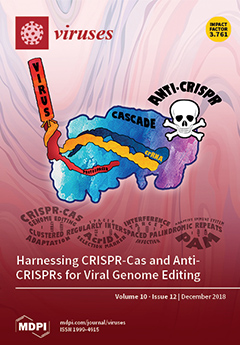Open AccessArticle
RVFV Infection in Goats by Different Routes of Inoculation
by
Andrea L. Kroeker 1,*, Valerie Smid 1, Carissa Embury-Hyatt 1, Estella Moffat 1, Brad Collignon 1, Oliver Lung 1,2, Robbin Lindsay 3,4 and Hana Weingartl 1,5,*
1
Canadian Food Inspection Agency, Winnipeg, MB R3E 3M4, Canada
2
Department of Biological Sciences, University of Manitoba, Winnipeg, MB R3T 2N2, Canada
3
Public Health Agency of Canada, Winnipeg, MB R3E 3M4, Canada
4
Department of Entomology, University of Manitoba, Winnipeg, MB R3T 2N2, Canada
5
Department of Medical Microbiology, University of Manitoba, Winnipeg, MB R3E 0J9, Canada
Cited by 8 | Viewed by 4709
Abstract
Rift Valley fever virus (RVFV) is a zoonotic arbovirus of the Phenuiviridae family. Infection causes abortions in pregnant animals, high mortality in neonate animals, and mild to severe symptoms in both people and animals. There is currently an ongoing effort to produce safe
[...] Read more.
Rift Valley fever virus (RVFV) is a zoonotic arbovirus of the Phenuiviridae family. Infection causes abortions in pregnant animals, high mortality in neonate animals, and mild to severe symptoms in both people and animals. There is currently an ongoing effort to produce safe and efficacious veterinary vaccines against RVFV in livestock to protect against both primary infection in animals and zoonotic infections in people. To test the efficacy of these vaccines, it is essential to have a reliable challenge model in relevant target species, including ruminants. We evaluated two goat breeds (Nubian and LaMancha), three routes of inoculation (intranasal, mosquito-primed subcutaneous, and subcutaneous) using an infectious dose of 10
7 pfu/mL, a virus strain from the 2006–2007 Kenyan/Sudan outbreak and compared the effect of using virus stocks produced in either mammalian or mosquito cells. Our results demonstrated that the highest and longest viremia titers were achieved in Nubian goats. The Nubian breed was also efficient at producing clinical signs, consistent viremia (peak viremia: 1.2 × 10
3–1.0 × 10
5 pfu/mL serum), nasal and oral shedding of viral RNA (1.5 × 10
1–8 × 10
6 genome copies/swab), a systemic infection of tissues, and robust antibody responses regardless of the inoculation route. The Nubian goat breed and a needle-free intranasal inoculation technique could both be utilized in future vaccine and challenge studies. These studies are important for preventing the spread and outbreak of zoonotic viruses like RVFV and are supported by the Canadian-led BSL4ZNet network.
Full article
►▼
Show Figures






